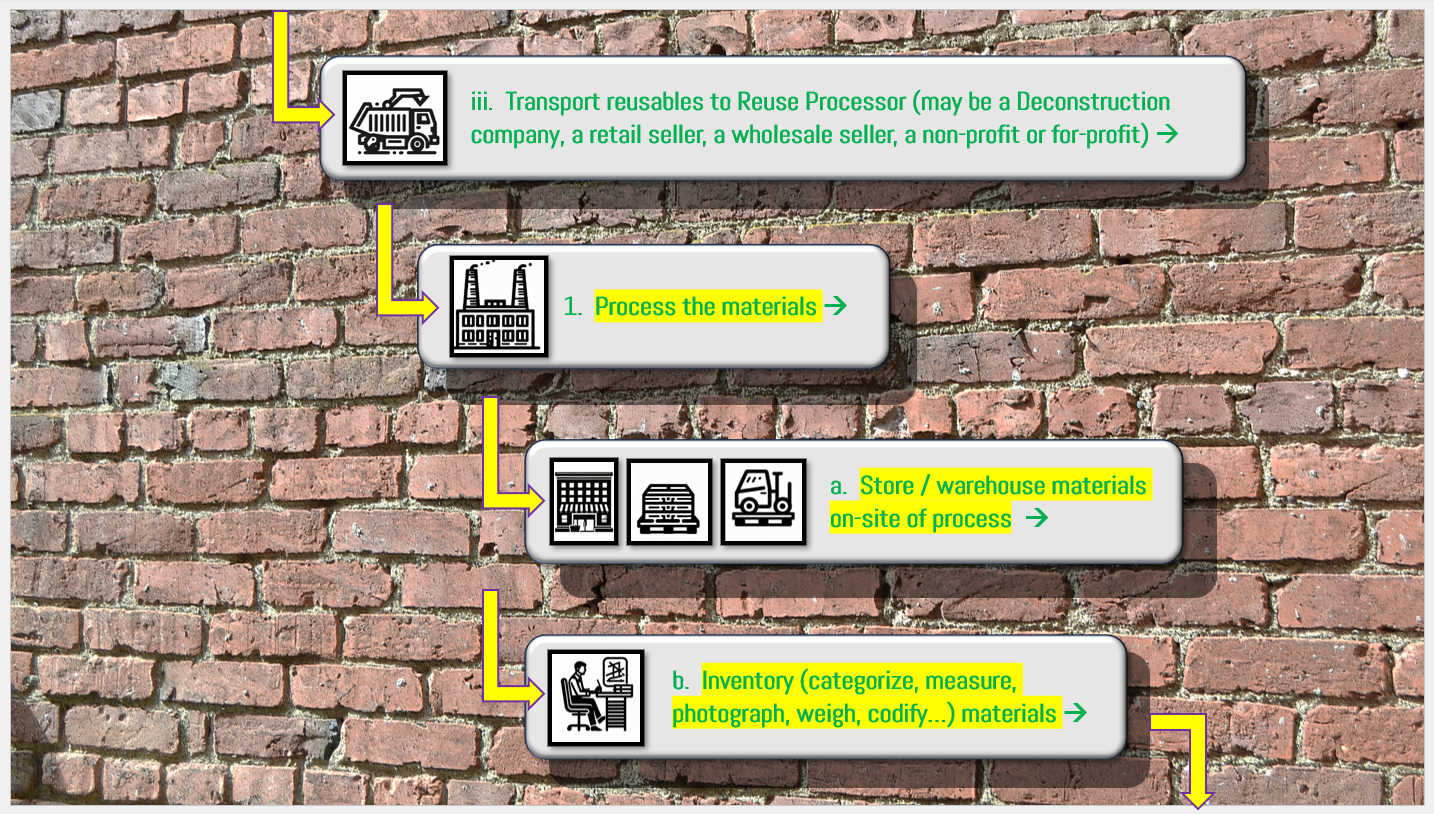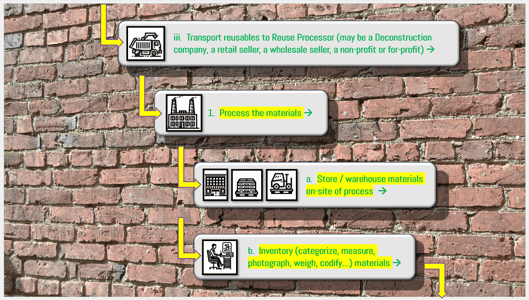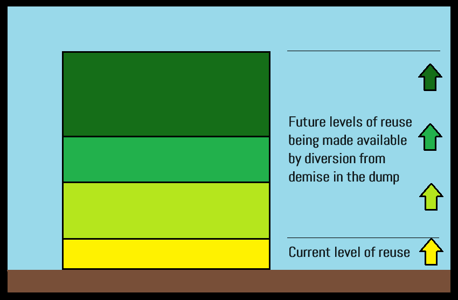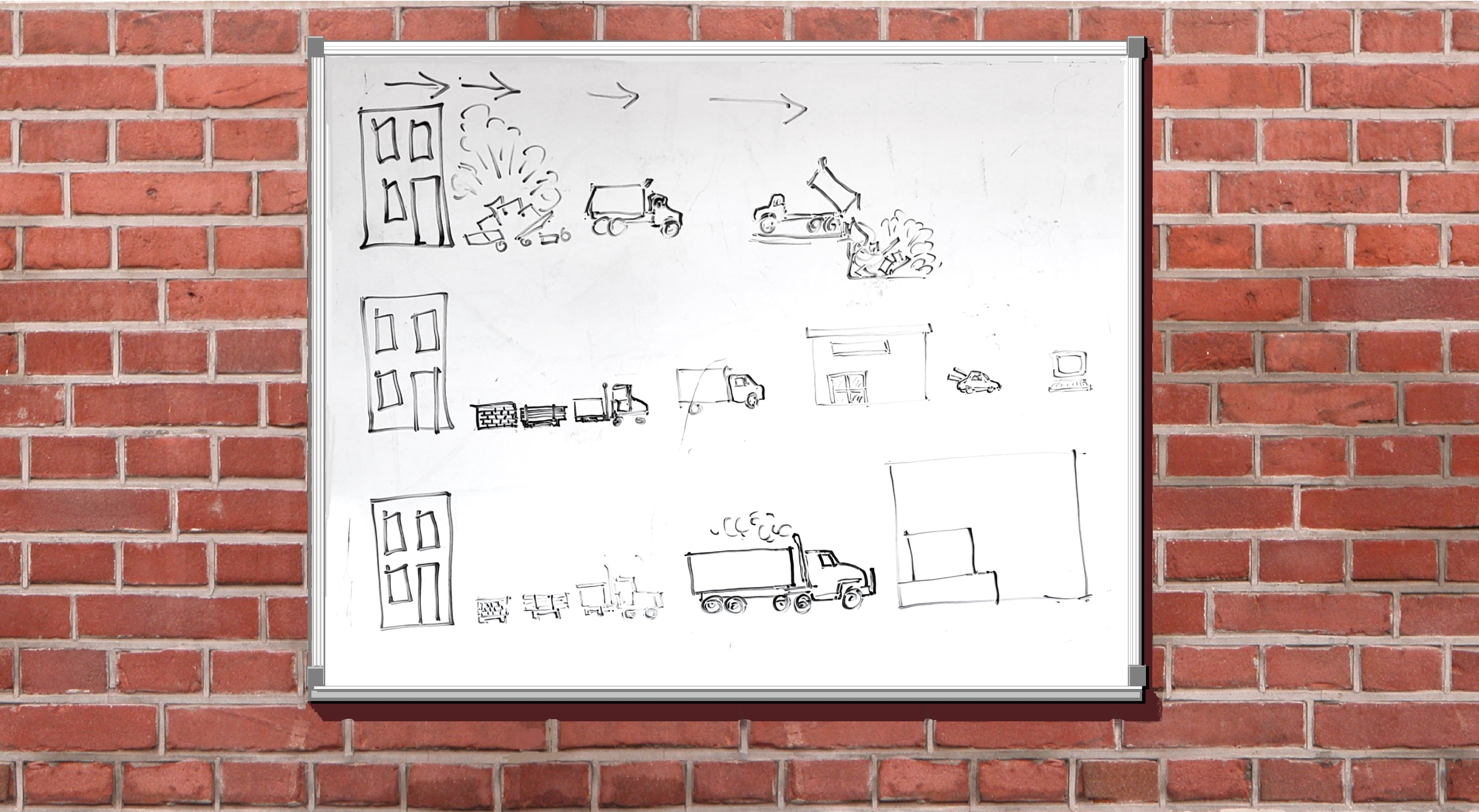It Is Time for Reuse to Grow Up...ward

For Reuse of building materials to expand in the United States and North America, the size of projects that can incorporate these materials needs to be expanded.
The current market for reuse of used building materials serves only residential and very small-scale commercial projects (there are exceptions). Within this market we see a willingness to accept inconvenience as a given since generally the projects that are served are residential remodels, small commercial interiors like restaurants, and the needs of makers and craftspersons, hobbyists, collectors, antique stores, upcyclers, and other small businesses.
These projects do not even begin to encroach into larger commercial projects or other larger demand-side uses which require a completely different system of specifying, sourcing, purchasing, timing, shipping, consistency of quality and quantity, breadth of selection, and availability in technological systems of design, specification, categorization, and ordering.
The current model of distribution of used materials for reuse serves the current audience. Period.
It is time for a NEW MODEL.
Large volume will be key.
Understanding the processes, practices, and workflows of these larger potential purchasers will be key.
Storage and warehousing of larger quantities will be key.

New efficiencies of processing will be key:
- Identifying (in-situ, automatically, visually, etc.)
- preparing,
- weighing,
- measuring,
- categorizing,
- coding (as in bar codes, QR codes, RFIDs, and others),
- inventorying,
- naming, describing, and writing specifications in acceptable, accurate, consistent, and recognizable formats,
- making necessary information available for visual modeling,
- accessing within current channels and software systems online for design and specification,
- selling in accordance with existing and future purchasing models (ecommerce, directories, and online marketplaces like ReCapturit) and integrated into software of the AEC / Architecture, Engineering, and Construction community.
Who would buy these materials if they were available in this way?
A manufactured home manufacturer might be willing to incorporate used lumber into its raw materials. Where would they source them? How could they be assured of such a thing as dimensional consistency of materials to comply with the tight tolerances of factory-built construction?
Laminated Timber (CLT - Cross-Laminated-Timber, DLT - Dowel-Laminated-Timber, Glue-Laminated, and others) are all within a burgeoning industry making huge components for large wooden structures. Used lumber can be used in these. Where can they find ample, consistent supply?
Structural steel? Most of the steel that is removed from demolition goes not into reuse but is recycled. This is better than wasting it, but it is not nearly as advantageous as reusing it. Breaking it up and melting it down, then forming it into new products takes a huge amount of energy. Why not reuse these components in their current form in new construction?
Gypsum, or wall board, or drywall as it’s known. This material may not be easily reused in its current board form, except when it comes from excess of construction projects in new form. However, it is marvelously recyclable.
Brick, stone, terra cotta, masonry? Glass? Plastics? Insulation? Carpet? Equipment? Plumbing? Electrical? Lighting?
What will those sources be? Who will coordinate the removal and collection of these materials? Where will they go to be processed?
If we look at project size as an indication of quantities required and available, we can think of the current audience like a stratum, or layer. It is only the bottom layer and by no means the biggest nor deepest layer.

Commercial projects and uses are layers above. Ideally, once the supply chain system is functioning and serving this bigger layer, greater opportunities will open up for using a wider variety of materials from many more sources. That is our objective.
Future articles will address technologies being developed, models of processing and distribution, grading of materials and much more.
We are working to grow this industry of reuse upward to higher levels and bigger layers of reuse.
It is time to grow up… ward.
Join the movement. Waste Is Not Waste Until It's Wasted.
Larry
#reuse #recycling #buildingmaterials #sustainability #waste#zerowaste #construction #architecture #design #reclaimedbuildingmaterials #recapturit #urbanplanning #reuse #recycling #reclaimed #architecturalsalvage #deconstruction #buildingmaterials #waste #zerowaste #sustainability #construction #recapturit #used #usedbuildingmaterials #ConstructionIndustry #Sustainability #ReclaimedMaterials #AEC #Innovation #NewTechnologies


